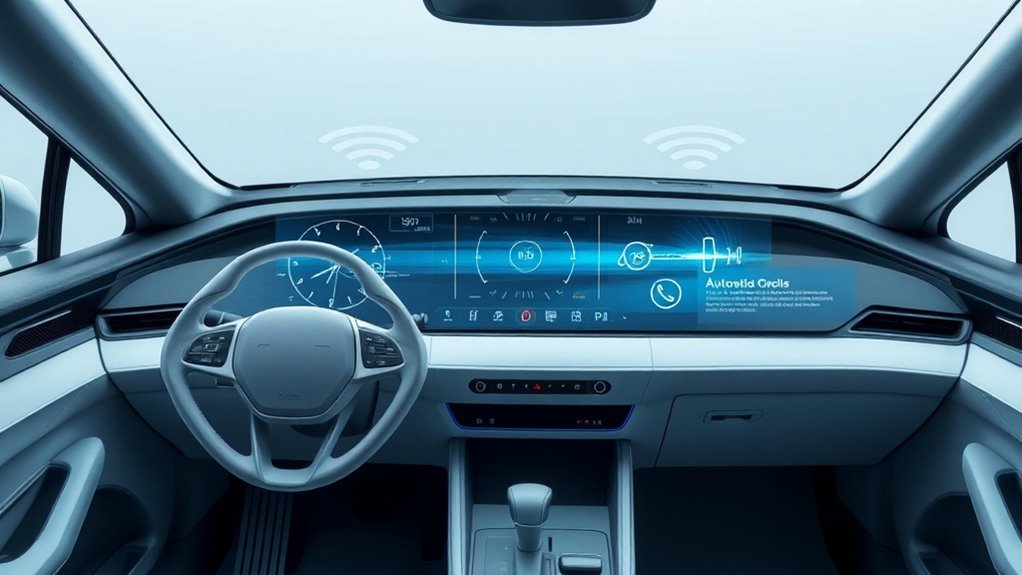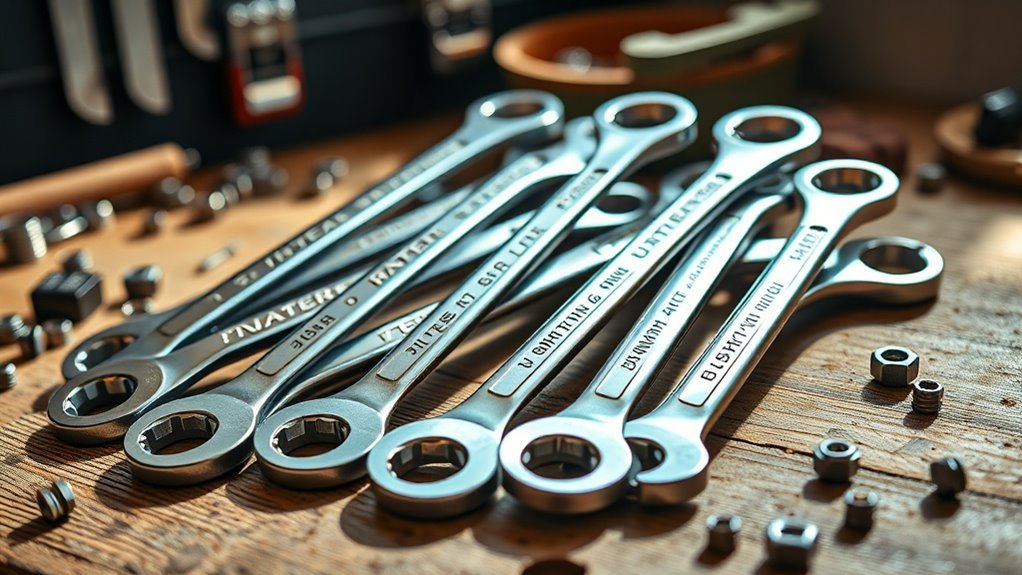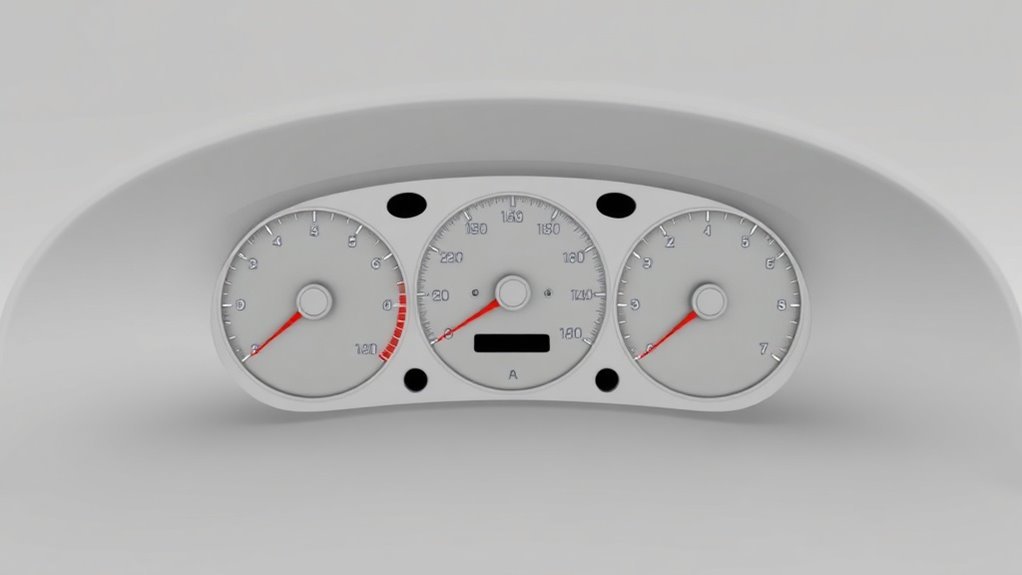How Vehicle Safety Tools Evolved With Technology

Vehicle safety tools have come a long way since the early innovations like hydraulic brakes and safety glass. You’ve likely seen how seat belts and airbags transformed accident protection, making trips safer. Anti-lock Braking Systems (ABS) later added control during emergencies. Now, with Advanced Driver Assistance Systems (ADAS), features like automatic emergency braking help prevent collisions. The focus is shifting towards autonomous technology for even better safety. If you’re curious about other advancements, there’s plenty more to explore.
Key Takeaways
- Early innovations like hydraulic brakes and safety glass set the groundwork for modern vehicle safety tools through improved performance and reduced injury risks.
- Seat belts became mandated, significantly enhancing occupant safety by preventing ejections and absorbing impact forces during collisions.
- The introduction of airbags in the 1970s revolutionized safety, providing crucial cushioning and reducing injuries in crashes.
- Anti-lock Braking Systems (ABS) increased control during braking by preventing wheel lock-up, enhancing stability and driver confidence in emergencies.
- Advanced Driver Assistance Systems (ADAS) use sensors and real-time monitoring to prevent accidents, predict hazards, and support proactive maintenance, paving the way for future technologies.
The Birth of Automotive Safety: Early Innovations
Though the automobile revolutionized personal transportation, it also brought significant safety concerns that needed addressing. Early pioneers recognized these issues and took steps to innovate.
For instance, in the 1920s, the introduction of hydraulic brakes vastly improved vehicle stopping power, making accidents less likely. Headlights became brighter and more reliable, enhancing visibility during nighttime driving.
Additionally, the advent of safety glass in the 1930s minimized injuries from shattering windshields in collisions. Automakers also began incorporating improved designs, like crumple zones, to absorb impact energy.
These early innovations laid the groundwork for ongoing developments in automotive safety, ensuring that as you travel, your experience remains as safe as possible. The evolution of these tools reflects a commitment to protecting drivers and passengers alike.
The Introduction of Seat Belts: A Game Changer

As the automotive industry evolved, the introduction of seat belts became a fundamental moment in vehicle safety, fundamentally changing how drivers and passengers were protected during collisions.
When you buckle up, you’re not just following a rule; you’re greatly increasing your chances of surviving an accident. Seat belts work by restraining your movement, preventing you from being thrown forward or ejected from the vehicle.
It’s a simple yet powerful tool that helps to absorb impact forces, keeping you safer during sudden stops or crashes. Over the years, awareness campaigns and legislation have made seat belts standard in all cars.
Now, it’s hard to imagine driving without that essential protection, showing just how integral this innovation has become in saving lives on the road.
Airbags: Revolutionizing Impact Protection
In the 1970s, airbags emerged as a groundbreaking advancement in vehicle safety, offering an additional layer of protection that complemented seat belts.
When you think about collision scenarios, it’s clear how essential airbags are. They deploy rapidly during an impact, cushioning your body and helping to prevent serious injuries.
Unlike seat belts, which hold you in place, airbags absorb the force of the collision, reducing the risk of head and chest trauma.
Most modern vehicles come equipped with multiple airbags, including front, side, and curtain airbags, ensuring thorough protection.
As technology has progressed, the systems have become smarter, adapting to different crash situations.
This innovation has greatly contributed to reducing fatalities and serious injuries, making driving a safer experience for everyone.
The Advent of Anti-lock Braking Systems (ABS)
Anti-lock Braking Systems (ABS) transformed how you experience vehicle control during emergency situations.
By preventing wheel lock-up, ABS boosts safety and enhances your ability to steer effectively when braking hard.
Over the years, the technology has evolved, making modern vehicles safer than ever before.
Mechanism of ABS
While you might think that simply pressing the brake pedal should effectively stop a vehicle, the reality is more complex, especially on slippery surfaces.
This is where anti-lock braking systems (ABS) come into play. When you apply the brakes, ABS prevents the wheels from locking up by automatically modulating the brake pressure.
Sensors monitor the wheel speed, and if a wheel begins to skid, the system rapidly pulses the brakes on and off. This helps maintain traction and steering control, allowing you to maneuver during an emergency stop.
You might feel a pulsating sensation in the brake pedal, indicating that ABS is doing its job, keeping your vehicle stable while helping you stop safely, even in tricky conditions.
Impact on Safety
The introduction of anti-lock braking systems (ABS) has greatly enhanced vehicle safety, particularly in emergency situations. With ABS, you can maintain steering control while braking hard, considerably reducing the chances of skidding. This technology not only improves vehicle stability but also gives drivers more confidence when facing abrupt stops.
| Benefit | Description |
|---|---|
| Increased Control | Helps maintain steering while braking. |
| Shorter Stopping Distance | Reduces the risk of loss of traction. |
| Enhanced Driver Confidence | Encourages safer driving in emergencies. |
Evolution Over Time
Since their introduction in the late 1970s, anti-lock braking systems (ABS) have undergone significant advancements, transforming vehicle safety.
You might be surprised to learn how these changes have made driving more secure for everyone.
Here’s how ABS has evolved:
- Enhanced Sensor Technology: Improved sensors now detect wheel lock-up more accurately, preventing skidding.
- Adaptive Systems: Modern ABS can adjust braking pressure based on driving conditions, optimizing safety in diverse environments.
- Integration with Other Systems: ABS now works with stability control and traction control systems, providing thorough safety.
- Widespread Availability: Today, ABS is standard in most vehicles, ensuring that more drivers benefit from this life-saving technology.
Embracing these innovations means you’re safer on the road!
The Rise of Advanced Driver Assistance Systems (ADAS)
As technology evolves, Advanced Driver Assistance Systems (ADAS) have become essential in enhancing vehicle safety.
These systems, like adaptive cruise control and lane-keeping assist, work alongside you to reduce the risk of accidents. With sensors and cameras that monitor your surroundings, ADAS can alert you to potential hazards and even take control in critical situations.
You might find features like automatic emergency braking particularly comforting, as they can prevent or mitigate collisions. In addition, these technologies continually improve through software updates and real-time data analysis.
The Future of Vehicle Safety: Autonomous Technology
As you look toward the future of vehicle safety, autonomous technology is set to transform how we drive.
With advanced sensor integration and predictive safety analytics, these systems can anticipate potential hazards in real time.
You’re entering an era where vehicles mightn’t just assist but take the wheel themselves, making roads safer for everyone.
Autonomous Driving Systems
While many drivers still rely on traditional safety features, the introduction of autonomous driving systems promises to revolutionize vehicle safety markedly.
These advanced systems can help you navigate the road with minimal human input, making driving safer for everyone.
Here are some benefits of autonomous driving:
- Collision Avoidance: Systems can detect obstacles and react faster than a human driver.
- Traffic Management: They can optimize routes and reduce congestion, lowering the risk of accidents.
- Enhanced Driver Assistance: Features like adaptive cruise control provide timely alerts for any potential dangers.
- Increased Accessibility: These systems can help those unable to drive, ensuring wider mobility.
With ongoing advancements, the future of vehicle safety looks promising with autonomous driving.
Advanced Sensor Integration
The advancements in autonomous driving systems are paving the way for even more innovative safety features, particularly through advanced sensor integration.
You’ll find that modern vehicles now come equipped with a variety of sensors, including Lidar, radar, and cameras, all working together to create a cohesive safety network.
These sensors constantly gather data about the vehicle’s surroundings, enabling real-time analysis and decision-making. This integration allows for features like automatic emergency braking, lane-keeping assistance, and adaptive cruise control, making your driving experience safer.
As you navigate through complex environments, these advanced systems enhance situational awareness, reducing the likelihood of accidents. Moving forward, expect even more sophisticated sensor technologies to further enhance safety and reliability in autonomous vehicles.
Predictive Safety Analytics
Predictive safety analytics is revolutionizing how we approach vehicle safety in the age of autonomous technology. By leveraging vast amounts of data, these tools can forecast potential hazards and improve overall safety.
Here are a few ways predictive analytics makes a difference:
- Real-time Monitoring: You’ll get immediate insights into vehicle performance and behavior.
- Accident Prediction: It helps identify high-risk scenarios before they escalate into accidents.
- Maintenance Alerts: Stay updated on vehicle needs, preventing malfunctions before they occur.
- Driver Behavior Analysis: Gain insights on driving patterns, encouraging safer habits.
With these advancements, you’re not just reacting to safety issues anymore; you’re proactively preventing them, making roads safer for everyone.
Questions
How Do Vehicle Safety Tools Affect Insurance Premiums?
Vehicle safety tools can lower your insurance premiums. When you have advanced safety features, insurers often see you as less risky, leading to discounts and potentially significant savings on your overall insurance costs.
Are Older Vehicles Eligible for Safety Upgrades?
“Better late than never” applies here; yes, older vehicles can receive safety upgrades. Many aftermarket options exist, allowing you to enhance your car’s safety, potentially improving your driving experience while keeping you and others safer on the road.
What Are the Most Common Causes of Vehicle Accidents?
The most common causes of vehicle accidents include distracted driving, speeding, driving under the influence, weather conditions, and running red lights. Always stay aware of your surroundings to help prevent these incidents from occurring.
How Does Weather Impact Vehicle Safety Technologies?
Weather impacts vehicle safety technologies by causing reduced visibility and traction. Rain, snow, or fog can challenge systems like ABS and traction control. You’ll need to drive more cautiously and rely on advanced safety features during adverse conditions.
What Training Is Required for Comprehensive Understanding of These Technologies?
You’ll need a mix of formal education in automotive engineering, hands-on training with diagnostic tools, and familiarity with software systems. Staying updated on industry standards and innovations is essential for a thorough understanding of vehicle safety technologies.
Conclusion
As you’ve seen, vehicle safety tools have come a long way, evolving from basic innovations to advanced technologies that protect drivers and passengers alike. Consider a hypothetical scenario: a car equipped with ADAS detects a potential collision and autonomously brakes to avoid an accident. This kind of technology not only saves lives but also reduces the stress of driving. As we move toward fully autonomous vehicles, the future of safety looks promising, ensuring a safer journey for all.






